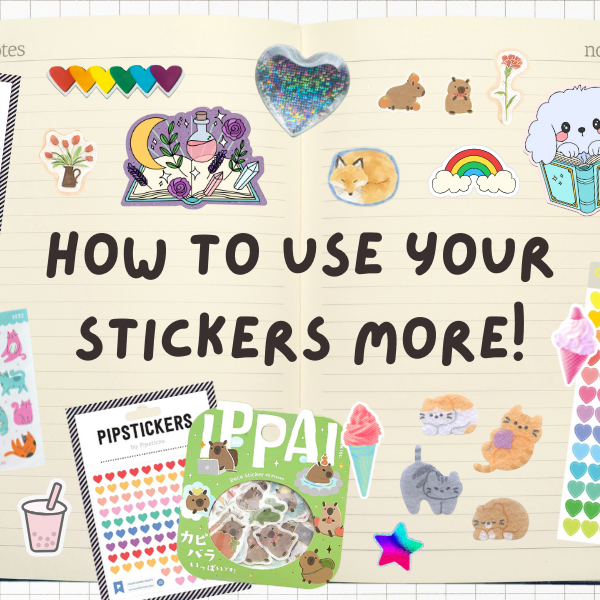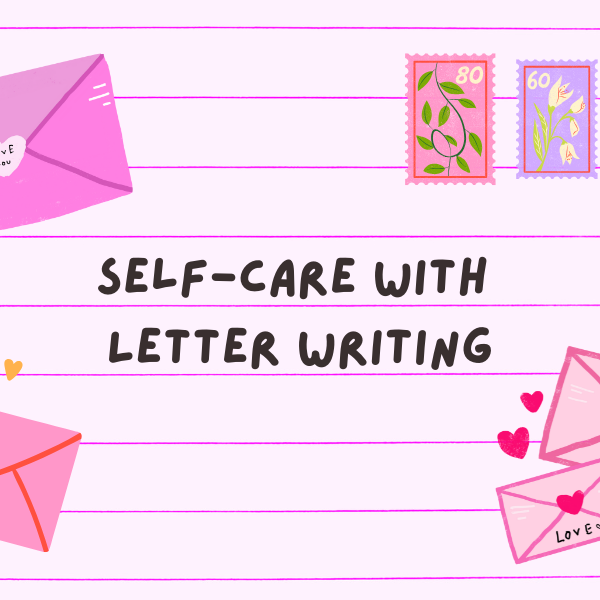

How to start a Budget Tracking Bullet Journal
Want to add lots of fun stationery to your life, but funds are tight? We've got some budget tracking and savings goal tips to help you! Have you ever tried a budget tracking bullet journal before? Budget tracking in your bullet journal is a great way to track your spending, plan your budget and save for the things that you love to do!! Have a read through our latest blog to help you with your stationery saving goals!  (Via @cardigansandchamomile )
(Via @cardigansandchamomile )
Why should you use a bullet journal for budget tracking?
1. Tracking your spending and expenses can help you to see what you spend money on and helps you to notice patterns so that you can reduce spending in certain areas.
2. Budget tracking in your bullet journal helps you to visualise where your money is going and how it’s being used. Through visual aids such as tables, graphs and pie charts, budget tracking in your bullet journal is a great way to problem solve and better understand your finances.
3. Budget tracking helps to break down how much of your earnings are left after bills and necessary expenses, so that you can make savings goals for all of the fun things that you life, like holidays and fun stationery!
4. Budget tracking in your bullet journal can make a boring task fun! By using bright colours, stickers and fun layouts, you can make savings more exciting and easier to understand!
Plus, using both sides of your brain (the creative and logical) will give you a more enriching and memorable experience.  (Via @jimsjournal )
(Via @jimsjournal )
Budget Planning & Tracking Supplies:
Dot Grid Bullet Journal
A dot grid bullet journal is perfect for creating a budget tracking layout. Use the dot grid to create tables and graphs.
Our Top Dot Grid Bullet Journal Picks for Budget Tracking:
- We recommend a Mossery Dot Grid Notebook or Twinbook (with both planner and notebook) for your budget tracking, as you can refill it when your insert is full.
- Rhodia Rhodiarama A5 Dot Grid Notebook, has a soft flexible leather cover. These notebooks are quite thin, flexible and light weight, making them very portable and perfect for slipping into your handbag.
Check out our range of A5 dot grid notebooks here.  (Via @jolie.lust )
(Via @jolie.lust )
Guided Budget Planner
Is the idea of making your own bullet journal spreads too stressful? We have a great range of Budget Planners and Budget Planner extension packs and pages that you can add to your planner. These planners come with layouts and prompts for budgeting.
Find Budget Planners and Budget Planning accessories here!
Budget Stickers
Budget stickers have lots of stickers that are perfect for budget tracking, such as savings & expenses. They can make it easy to put bill due dates into your calendar and can have fun rewards for saving, no spend challenges and motivational quotes. These stickers will make your budget tracking easier, fun and pretty!
Find Budget Stickers here!
Box & Functional Stickers
Box stickers can help you to colour code categories or lists and highlight important notes! We also have lots of functional sticker books filled with dates, dot points and planner words. These are both great companions to your budget tracker.
Shop box and functional stickers here! (Via @zebrapen_usa & @abulletjournaladay )
(Via @zebrapen_usa & @abulletjournaladay )
Highlighters and Colourful Gel Pens
Highlighters and colourful pens are a MUST for your budget tracking bullet journal. They're perfect for making graphs and pie charts to track your spending & savings! You can also colour code different categories to make your tables easy to read.
Shop Highlighters and Gel Pens!
Stencils or Stamps
If you're not comfortable drawing up your own lines and tables, we recommend using stencils or stamps to help you draw your budget tracking layouts. They can make the straight line process quick and simple!
Shop Stamps, Ink Pads and Stencils here!
Washi Tape
Washi tape is perfect for creating borders, lines, separating sections and as a fun way to create a graph! Mix up your layouts with washi tape!
Shop Washi Tape here!
Fun stickers
It's good to remind yourself of the things you're saving for! Add in plant stickers, stationery stickers, holiday stickers, car decorations and fun quotes to motivate your savings.
Shop stickers here! (Via @lootengstudio )
(Via @lootengstudio )
How to create a budget tracker in your bullet journal:
1. What should you track in your budget journal?
First decide what time period you are tracking and what your goal for budget tracking is. Are you using a budget tracker to track your spending or is to save up for something special? Your budget journal is for tracking your income, fixed bills, variable expenses, spending and savings.
The goal is to make tally's at the end of each week, fortnight or month to work out how much you've spent and what you've saved. From there you can look for ways to reduce your spending and plan what to save for.
Will you track your expenses each week, fortnightly or monthly?
You might want to compare your budget tracking over 6 months?
Maybe you have savings goals that are for a whole year?
2. Know your income.
Do you have a fixed income or does it change regularly. This will be the starting point of your budget tracking. You may even like to organise your budget tracker around your pay cycle. Ie if you are paid fortnightly, it may work better for you to use a fortnightly budget tracking layout.
3. What are your fixed expenses?
If you pay rent/mortgage, phone bill, utility bills like water/electricity etc and regular subscription fees - these should be subtracted from your income so that you know how much money you have left over from your income to spend on things like groceries, savings and personal spending.
You may need to do a little math here and work out how much you spend each week towards your electricity bill etc.
4. What savings are left?
Split up the money that is left over for your variable expenses and savings.
Here are a few categories where you may use your left over earnings:
groceries
, fuel, medication,
eating out, shopping/personal spending,
savings,
unplanned or random spending.
It’s always important to plan for unexpected spending and to have a safety net of savings in case there is a medical emergency or a necessary item in your life breaks or you need to take an unexpected trip or time off work.
 (Via @bujobyjesslee )
(Via @bujobyjesslee )
5. Track your purchases
Tracking your purchases is key to noticing how you spend your money and finding where you can cut pack. Keep a spending tracker of What you buy, when did you buy it, how much did it cost?
Tracking your purchases can be really hard to remember, which is why having a bullet journal is a great tool for budget tracking, as it’s portable.
However, you could also keep a record in your phone notes and transfer it to your bullet journal later.
6. Total your expenses
At the end of each week, fortnight or month, total your expenses and see how much you’ve saved. This is the main feature of your budget tracker where you can record your expenses and work out your future budgets, find out if you went over budget and see where you are spending your money. It's a great visual tool to see where all of your money is spent and how much savings you have.  (Via @ahealthyblueprint )
(Via @ahealthyblueprint )
8. How to create a budget tracking layout
in your Bullet Journal
There are many ways to create your layout.
Graphs, pie charts and tables are all great ways to visually track your expenses.
Spending tracker in your Bullet Journal :
Use a table to track your spending, including: what you bought, when you bought it and how much it cost. Keep your bills separate and just focus on your spending of left over income post bills.
Bill Tracker in your Bullet Journal:
List your different types of bills using a table graph to show fixed bills and also variable bills. Record the bill amount, due date, and a section to mark off when the bill has been paid.
Another way to track your bills is through using a calendar layout and a key for due dates and payments made.
Tally up the amount spent on bills monthly, 3 monthly or 6 monthly to see where you are spending the most money, separating fixed bills and variable bills. You might notice a pattern that shows you spend a lot of money on streaming services or your gym membership.
Budget Tracker in your Bullet Journal:
At the end of each week, fortnight, month, year etc. create a budget tracker using tables, graphs or a pie chart to visually represent how your money is spent. This is a great way to show each aspect of where your money is spent together on one page including your income, fixed bills, debt, variable bills, medical expenses, groceries, eating out, shopping/personal spending, travel and savings. (Make as many categories that are relevant to you).
Saving Goals in your Bullet Journal:
Make savings goals to work towards such as holidays, special items and life goals.
Divide your savings into different categories such as "safety net", "holidays", "new car" and allocate your savings into different categories to work towards your savings goals.
Graphs are a great way to show your progress and help to motivate you. You could even make one to compare with previous months. (Via @wickedawesomearts )
(Via @wickedawesomearts )
9. Make changes to your spending habits
Use your Budget Tracking Bullet Journal to notice your spending habits. Recording your spending can show you areas where you can cut back on spending, it can also help you to better plan for things that you want to save for.
10. Set a budget
Use what you've learnt to try and set a budget each week/fortnight/month, but make it realistic. ie Setting a grocery budget to $150 a week instead of $20 a week is more realistic. At the end of each term record your budget amount and the actual amount you spent. You might find you have a little extra savings to put aside or that you're going over budget in a certain area. If this is the case, take a look at your spending tracker to see where you are going over budget and if it's necessary or not.  (Via @hei.astri.bujo )
(Via @hei.astri.bujo )
Important note!
Please remember - we are not budgeting experts, we are stationery experts. Please take financial advice from the experts and spend within your own means!! There are many great resources out there for budgeting and financial advice. However, we hope that this blog post has given you some new skills on how to use your bullet journal for tracking your expenses and creating budget layouts, so that you may use it in a way that is best suited to you needs.
Thanks so much for tuning in! We hope this will help you to save up for all of your fun stationery goals! What's on your stationery shopping list? Tell us in the comments!
Did you know you can make a wish list on our website? While you're saving up for your fave stationery items, you can browse and add to your wish list.
Take a look at the latest new stationery in the shop: https://www.washigang.com/collections/new
Continue Reading
-
 If you’re searching for the perfect Christmas gifts for stationery lovers, look no further. Find the perfect stationery gifts this Christmas. Shop journals, diaries, pens, stickers, Japanese stationery and creative supplies for every stationery lover at WashiGang.Read now
If you’re searching for the perfect Christmas gifts for stationery lovers, look no further. Find the perfect stationery gifts this Christmas. Shop journals, diaries, pens, stickers, Japanese stationery and creative supplies for every stationery lover at WashiGang.Read now -

How to Use Your Stickers More!
Read nowIf you’ve been saving your stickers for “the perfect moment,” here are some fun and low-pressure ways to start using them up and enjoying them in your journal or everyday life.
-

Self-Care with Letter Writing
Read nowThere’s something oddly comforting about sitting down with a warm cuppa, your favourite pen, and a blank sheet of beautiful paper. It’s quiet. Slow. Intentional. In a world that’s always rushing and buzzing, letter writing offers a pocket of peace—a soft little pause that says, “You can breathe here.”
It’s not just nostalgic—it’s a form of self-care. Here’s why letter writing (with cute stationery, of course) might just be the most underrated way to chill out and reconnect with yourself and others.


![[TRENDING] Uni-Ball Gel Pens](http://www.washigang.com/cdn/shop/files/Screenshot_2025-11-11_at_3.38.08_pm_300x300.png?v=1762839527)
![[NEW] Mildliner 2025 'Calm' Colours](http://www.washigang.com/cdn/shop/files/Zebra_Calm_300x300.jpg?v=1750726556)






Leave a comment